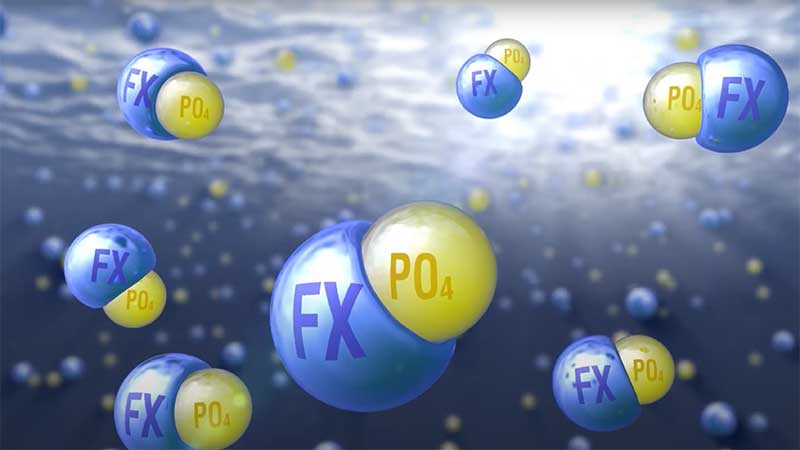Removing phosphorus from wastewater through chemical precipitation, using traditional aluminum and ferric coagulants, consumes large quantities of alkalinity, which can inhibit your biological treatment processes, particularly nitrification. It can also push your effluent pH below its discharge limit.
Alkalinity, expressed as milligrams of calcium carbonate (CaCO3), is defined as the capacity to neutralize acidity. In wastewater treatment, alkalinity acts as a buffer, reacting with acids to resist pH swings and maintain the pH in the neutral 6.0 to 8.0 range. The average wastewater has a reserve of alkalinity, mostly magnesium and calcium carbonates, balancing the pH of the water and supporting the biological treatment process. But once it is consumed by the addition of highly acidic iron or aluminum coagulants, the pH can drop dramatically, requiring additional chemical feeds to readjust the effluent pH.
Traditional coagulants react with alkalinity as well as phosphate.
Chemical precipitation of phosphorus with iron or aluminum salts will form an insoluble phosphate precipitate with the soluble orthophosphate. But it will also form insoluble ferric hydroxide (Fe(OH)3) or aluminum hydroxide (Al(OH)3). It is the formation of these hydroxides, removing the OH– ions, that consumes the alkalinity in your wastewater. For example, adding a dose of 10 mg/L of ferric chloride, FeCl3, consumes 9.2 mg/L of alkalinity as CaCO3. Adding a dose of 10 mg/L of aluminum sulfate, Al2(SO4)3⋅18Η2Ο, consumes 4.5 mg/L alkalinity as CaCO3.
Side reactions with hydroxide drive up dosages required for phosphorus removal.
These side reactions with hydroxide also drive up the dosage required to achieve low phosphorus limits. Aluminum or ferric coagulants do not bond preferentially with phosphate, so by bonding with the hydroxide ion, these metals are unavailable to form bonds with the phosphate. To have enough coagulant to bond with the phosphate for removal, more coagulant needs to be added beyond the stoichiometric requirement for phosphate removal alone. Therefore, a minimum molar ratio of 2 Al or Fe to 1 PO4 removed is often needed to achieve limits below 1 mg/L of phosphorus. To achieve very low limits of less than 0.1 mg/L Total P, a molar feed ratio of as much as 5 to 7 to 1 may be required. As more coagulant is added and the phosphate concentration decreases, the amount of metal hydroxide produced increases, consuming even more alkalinity. This loss of alkalinity results in a drop in pH that requires lime or caustic addition for pH adjustment to effluent limits.
Neo WaterFX is different, preferentially bonding with phosphate.
Neo WaterFX is a lanthanide-based coagulant that preferentially bonds with phosphate. Because of this preference and strong ionic bonding, the molar feed ratio required for phosphorus removal is roughly 1 lanthanide to 1 phosphate. No additional coagulant needs to be fed to account for side reactions with hydroxide. Lower doses with much lower acidity and no reactions with hydroxide ions mean very little alkalinity is consumed and your pH will remain stable. A stable pH, with alkalinity reserves preserved, supports your biological processes, including nitrification.
Preserving alkalinity is just one of many benefits to switching to WaterFX for phosphorus removal.
Learn more about how WaterFX can preserve your alkalinity during phosphorus removal from wastewater, simplify your chemical feeds, and support your biological processes, as well as many other benefits by visiting our website.



